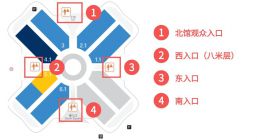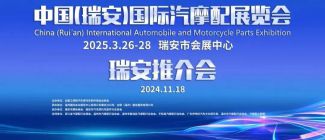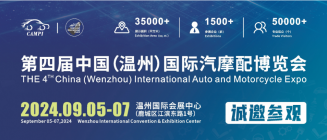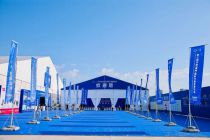For our Chinese consumers, who holds the bull's ear in the joint venture? It is known to all that it is a German car that represents the spirit of Western engineers. However, the leading position of German cars in the Chinese market is facing a strong challenge of Japanese cars, which represents the spirit of Oriental craftsmanship.
Just in the past may, the total sales volume of four Japanese car companies that have announced their sales volume in China has increased by more than 10% year on year. By contrast, the domestic passenger car market is still in a declining trend of "falling constantly", and the wholesale sales volume is even close to 30%.
According to the figures given by the China Automobile Association, in May, the German system and the Japanese system sold 382700 and 372000 vehicles respectively, with a market share of 24.51% and 23.83%, which are about 0.7 percentage points different. It should be noted that in the whole year of 2018, the German system is still nearly 4% higher than the Japanese system's 18.75% by 21.43%, so may is the closest time in recent years.
This "car market winter night", why is the Japanese car on fire? Many people talk about "fuel saving and durable", but the appearance can never explain how Japanese cars go against the market, and why this department grasps the pain point of consumer demand.
Therefore, it is of great significance to dig into the strength of Japanese cars from the perspective of industry.
Strong period of the Japanese system
Just last week, three ministries and commissions of the state announced a new round of vehicle market boosting strategy to stimulate demand from the perspective of removing restrictions on new energy vehicles. Not to mention the effect or details of the policy, obviously this means that China's car market really needs to "pull a handle".
The weakness of the overall market contrasts with the strength of the Japanese system
According to the data just released by the passenger Federation, in May, the retail sales of narrow sense passenger vehicles fell by 12.5% to 1582075 vehicles year on year, and the wholesale sales fell even more, 1541545 vehicles fell by 16.9%. Some car companies are even slow to release sales data.
On the other hand, the offensive of "outstanding students" Japanese cars continues.
In May, Toyota and Honda were still the two most eye-catching Japanese car companies. After slowing down in March, Toyota returned to the "double-digit growth" club, with terminal retail sales increasing by 13.2% to 138500 vehicles year-on-year, which is still the Japanese car company with the highest sales volume in China; Honda's CR-V returned strongly this year due to the weakness of "engine accelerator" in the same period last year, with retail sales surging by 37.5% to 136 in May year-on-year, 486 cars, a hidden threat to Toyota's championship position in China and Japan.
Toyota's cumulative sales increased 11.9% to 629100 vehicles year on year. It is the only Japanese car company that has exceeded 600000 vehicles in total this year. The target of 1.6 million vehicles this year has reached 39.3%. Considering the seasonal differences, it is likely to be one of the most promising car companies to achieve the target. Honda achieved a 19.1% increase with a cumulative score of 597027 vehicles, "the fastest.".
Nissan's performance needs to be divided into two parts. In terms of absolute up and down, it has suffered two consecutive months of decline, but in May, it fell 4.8% year-on-year to 121895 vehicles, still performing better than the market. Cumulative sales fell 0.4% year-on-year to 587197.
As a result of product cycle and other factors, Mazda is still the only one among the four Japanese automobile enterprises to decline, with a year-on-year decline of 29.0%. The sales volume of 17385 vehicles has opened a gap with the usual level of more than 20000 vehicles. In the first five months, Mazda's cumulative sales fell 31.4% year-on-year, and the sales of 86771 vehicles failed to exceed 100000.
The sales volume of four Japanese automobile enterprises was merged, and the total sales volume in May increased by 10.7% to 414266 vehicles year on year; review the performance since this year: the total sales volume in January increased by 4.2% year on year, breaking through 440000 vehicles year on year, fell by 3.1% to 244196 vehicles year on year in February, increased by 8.9% to 394791 vehicles year on year in March, and increased by 10.2% year on year to 406480 vehicles year on year in April. It can be said that a new speed peak was reached in May.
The sales volume of Japanese cars in China in May 2019 is still short of some small car enterprises
Mitsubishi, Suzuki and Subaru, which have low sales, have yet to release figures, but the increase of Mitsubishi may offset the decline of Suzuki, with little impact on the overall rise and fall of Japanese Series cars.
According to the statistics of Daimler and Japan economic news, since January 2018, the total sales volume of the three Japanese car companies in China has increased for 17 consecutive months year-on-year. "One word review" pointed out two years ago that Japanese car companies are obviously differentiated in China. While large car companies are growing, small car companies are on the verge of extinction. According to the proportion of sales volume of large and small vehicle enterprises in China in Japan, the share of Toyota, Nissan and Honda has exceeded 90%. However, small Japanese vehicle enterprises are increasingly marginalized in the world's largest market and their living space is squeezed.
From January to May this year, four Japanese car companies that have announced sales volume have sold 1900095 new cars in total, with a year-on-year increase of 6.8% compared with 1779255 cars in the same period of last year. Compared with the background of continuous double-digit decline in the passenger car market, the sales volume of the four Japanese car companies is strong.
However, according to the current situation, the Japanese or German Facebook blindly, and its strong or weak absolute and static, is going into an extreme misunderstanding. If you look at history for more than ten years, it is not difficult to find that the German and Japanese families have actually led the joint venture camp alternately in the past ten years.
In the 1980s and 1990s, Carl h. Hahn, the seventh chairman of Volkswagen Group, had a unique insight and pledged the land of the East. In China, the world's first automobile market in the future, when Shanghai Volkswagen officially put into operation in 1985, private cars kept 285000 in the talent district. Wolf Castle continues to hold hands with SAIC and and FAW. The first competitors, such as Chrysler in Beijing and Peugeot in Guangzhou, have wasted their martial arts. It's not hard to understand that Volkswagen later became the leader of joint venture vehicle enterprises in the Chinese market.
The real outbreak of China's private passenger cars should start after China's accession to the WTO in 2001. In 2002, the German car market share was 40.39%. At that time, the independent car accounted for 24.93%, while the Japanese car market share was only 15.24%. However, with Dongfeng Nissan and a number of other car companies entering the war, the German share fell to 32.20% in 2003, while the Japanese share climbed to 20.53%.
The watershed was in 2005, when Dongfeng Honda and Dongfeng Nissan started to double their annual sales for several consecutive years, while the Santana family (Pusan and Santana 3000) reduced their support for VW by 50000, which was a big hit for Shanghai Volkswagen, which had an annual sales volume of 230000 at that time. As a result, the Japanese department managed to climb to 25.08%, while the German Department fell 20% to close at 17.78%. Japan has not relaxed its pace. In 2006, Camry, the first model of GAC Toyota, went on the market, creating a new generation of premium cars with the momentum of importing Camry in the early years. By 2008, the Japanese system had reached a peak of 30.79%. Since then, the share of joint venture has been reduced as a whole due to the independent development driven by the stimulus policy.
Another change has taken place, this time in 2012, which means "politics influences economy". The continuous Anti Japanese marches across the country have brought more trauma to Japanese cars in China than the March 11 earthquake of the previous year. The market share of Japanese cars fell to 19.17%, while that of German cars exceeded 21.70%. The following story may be familiar to all of you. After several years of recovery, the Japanese department has successively exceeded 4 million (including imported cars) in 2016, reached the sales volume of the whole Volkswagen in China in 2017 (4.2 million), and returned to more than 20% this year.
Therefore, if we look at the changes of Japanese cars in China from a static perspective, we are bound to get one-sided, paranoid and wrong conclusions. The development of history is always changing. The ups and downs of things need to be measured in a dynamic and objective way.
The car is out of order? Wrong
Why does this round become a strong cycle for Japanese cars? From the popularity of durability and low fuel consumption characteristics of some Japanese automobile brands to the continuous warming of political and economic relations between China and Japan, it has been known by the industry.
Complete sales volume of Japanese Series cars in China, currently released to April
It has been pointed out that the technical route of Japanese Series cars is conservative and stable in general, for example, the car machine and intelligence are always backward, but the advantages of low failure rate and long life are obtained by combining the advantages of manufacturing precision. In addition, most Japanese Series cars are good at saving fuel. When the whole market enters the depression round, the consumption will tend to be conservative, at this time, the Japanese Series cars will be easy to maintain, save fuel and save trouble It's easier to win.
In addition, the political and economic confrontation between China and the United States intensified, but the economic exchanges between Japan and China continued to heat up, and the civil opposition between the two countries also eased again and again, providing a better atmosphere for Japanese cars to go up in China. When American cars were defeated by their own problems and political environment, Japanese cars were the closest to brand level and price level, so German cars with slightly better price did not become the biggest beneficiary.
Japanese cars, which were originally conservative in thinking, frequently played technical cards, especially the hybrid technology, which was increasingly accepted by domestic consumers. In contrast to the situation that they were excluded in that year, it became the guarantee of "Japanese cars actually have strong power". For example, in the order of the new generation of leiling, the proportion of hybrid double engine models is more than 30%.
What is more likely to be ignored is the analysis of product structure. A long time ago, the "one sentence review" put forward many times that "in the new round, Japanese cars attach importance to cars, so they are successful".
But the support of the latest sales data once again turned to "SUV is the backbone of the market", and even Japanese cars are no exception. According to the retail sales data of China Federation of passenger cars in April, the car sales fell 17.1% to 765983 vehicles year on year, while the SUV sales fell 14.6% to 642552 vehicles year on year, which is a relatively rare phenomenon under the wave of continuous suppression of SUV growth in the past year. In May, we can take Japanese Nissan as a typical example, with Nissan Qijun, Xiaoke and Jinke leading to pull the total sales volume of its SUV models up to 5.0% year on year, reaching 38775,
If the share of each department provided by CAAC is in May, the gap between Japanese and German is smaller
In fact, this does not mean that Japanese cars no longer benefit from the "car strategy", nor does it mean that the significance of cars to the overall market has declined again. As described in Japan economic news: "although the Chinese car market has been in a slump since the summer of 2018, Japanese car companies have generally performed relatively well. In particular, the main car momentum is relatively strong. "
On the whole, it can be expected that the growth rate of cars will fall behind SUV again in a certain month. After all, the new car release is gradually tilting towards SUV again, and the new generation of cars that have been replaced will start to have sales volume in the same period, and the comparison base is slowly rising.
If it is also a newly launched car and a newly launched SUV, the former plays a role of net increase no less significant than the latter. At present, Toyota, which is developing SUVs in China, is still getting dividends through cars. FAW Toyota Asia Dragon has a rapid momentum. Under the background that the price of GAC Toyota Camry is higher than that of accord and other competitive products, it still recorded a year-on-year growth of 15% to 16023 vehicles, with the cumulative sales volume rising 19% to 68054 vehicles in the first five months. The new generation of leiling has 11 days after listing, 053 orders, of which high-end models account for a large proportion.
Honda's sales draft is also worth pondering. Among the six models sold in ten thousand clubs every month -- accord, Feidu, Lingpai, civic, CR-V and xr-v -- the company's brilliant wisdom, which has always been comparable with the company's xrv, has dropped this sequence this year. The key promotion target of the release is still accord, with 18252 terminal sales; although CR-V has the same high-speed growth driven by the low comparative base, the release only gives the sales volume of hybrid version.
Even Nissan, which may be taken as an example, can still show the significance of cars in vertical comparison. Looking back at Nissan's sales change curve in China this year, the best month was March, when Xuanyi and Qichen D60 drove Nissan's car sales (including Qichen) up 8.2% year-on-year, while SUV growth was only 2.7%. "If the growth rate of car is higher than that of SUV, it will increase as a whole, and if the growth rate of car is lower than that of SUV, it will decrease as a whole", doesn't that explain the problem?
As for the topic of cars and SUVs, many years of debate do not give a clear answer. On the one hand, before the definition and extension changes, SUVs are unlikely to exceed the market share of cars, unless a large number of cross-border cars are self designated as SUVs, on the other hand, SUVs and cars will move forward in their new car wave, and new SUVs with high-quality characteristics will become an important growth point. Don't forget that Toyota's wave of pure electric vehicles in China and the world is also led by two SUVs - c-hr and Yize.
2012-2018 China's wholesale sales volume of passenger vehicles and share of each department
In a word, the current trend of Japanese cars has many factors from appearance to depth, which are inseparable from politics, economy, industry and technology. It is a one-sided and paranoid point of view to emphasize that "only buying Japanese cars is to understand cars", or to insist that "only German cars have quality, and Japanese cars are Jerry built". No matter German, Japanese or American, or even the currently neglected legal system in China, they all have the advantages that other departments fail to grasp, but the adaptability of this market requires the simultaneous efforts of time, place, and physics.
Japanese cars, because it is behind China is a complex, entangled country, so Japanese cars often become a sensitive word in the industry. The author once wrote "the myth of Japanese cars should be broken" and "the power of Japanese cars. Can independent brands be copied?"? 》The purpose is to analyze the rise and fall as objectively and neutrally as possible and draw lessons from the strong.
If, after a certain period of time, the puzzle and analysis object of the global automobile industry turns to "why the sales volume of Chinese brand automobiles is growing so fast all over the world", that is the time when we can not repeatedly look at other departments.
AMS2024 Exhibition Guide | Comprehensive Exhibition Guide, Don't Miss the Exciting Events Online and Offline
Notice on Holding the Rui'an Promotion Conference for the 2025 China (Rui'an) International Automobile and Motorcycle Parts Exhibition
On September 5th, we invite you to join us at the Wenzhou Auto Parts Exhibition on a journey to trace the origin of the Auto Parts City, as per the invitation from the purchaser!
Hot Booking | AAPEX 2024- Professional Exhibition Channel for Entering the North American Auto Parts Market
The wind is just right, Qianchuan Hui! Looking forward to working with you at the 2024 Wenzhou Auto Parts Exhibition and composing a new chapter!
Live up to Shaohua | Wenzhou Auto Parts Exhibition, these wonderful moments are worth remembering!
Free support line!
Email Support!
Working Days/Hours!





